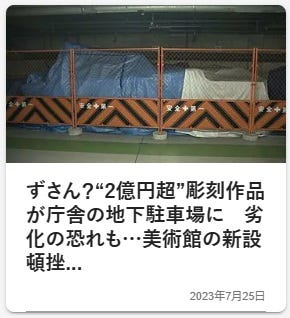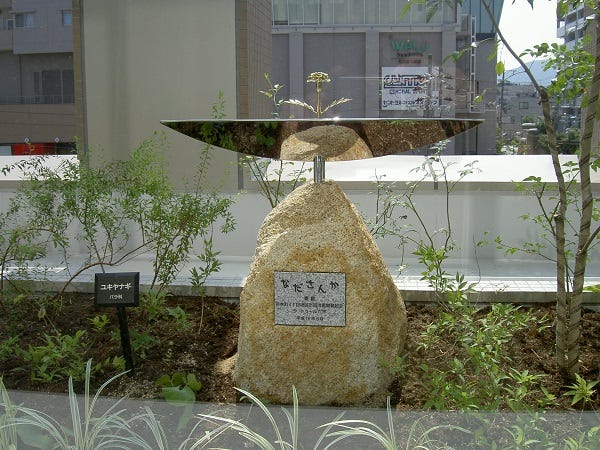Writing Japanese Art History since 2000 (3)
Chisai Fujita is researcher of contemporary Asian art. Chisai decides to write art histories about several Asian countries and regions since 2000. Today, she writes about Japan.
Hi there, I am Chisai Fujita 藤田千彩, based on Kyoto, Japan, writing worker and researcher of contemporary Asian art. Recently I have noticed that neighboring Asian countries and regions have published art history books that they wrote by themselves since 2000. However, in Japan where I am based, there are almost no books about Japanese art history after 2000. So, I decided, "well, I will write it".
This article is based on a gallery tour "Writing Japanese Art History since 2000" 1 / Looking at Osamu Kokufu's artworks (1)" and Chisai considers Japanese art history from various angles and its state after 2000.
See introduction, Writing Japanese Art History since 2000 (1) and (2).
From Public Art to Art Events (1)
Suppose you just see sculptures at station or city hall near your house. When you look at plate at your foot, but you don't know the artist. You ask Google who the artist is, it does not answer as well as you think. Is it unknown sculptor? Do you get angry when you say that the sculpture was made with your own taxes?
In Osaka, Japan in the summer of 2023, shocking news broke out. It is said many artworks owned by Osaka Prefecture were placed in the basement of the parking lot wrapped in vinyl.
"Over 200 Million Yen" Sculpture in Underground Parking Lot of Osaka Prefecture Government Building, FNN Prime Online, 25, July, 2023
They were "public art " works which were presented during the bubble economy around 1990. At that time, they were believed that having works of art made public spaces and people's minds enriched. In 2023, however, they are placed in public spaces for a long time, they became like air near you and unmaintained now.
On the gallery tour "Writing Japanese Art History since 2000" 1 / Looking at Osamu Kokufu's artworks (1)" in September 2023, we appreciated his public artwork which was produced in 2004. It is in the ward office in Kobe, Japan.
Osamu Kokufu “Nadasanka” (one of three works), 2004, photo by Chisai Fujita
Why is Kokufu's artwork there?
As I mentioned above, in the 1990s Japan had public art which was permanently located at the same place. In Kobe, since the 1980s, there have been many art events where everyone can enjoy artworks. For example, there were between JR Rokkodo Station and Hanshin Iwaya Station in 2003 at the event "Nada Bunka Jiku (Cultural Axis at Nada area in English)". The following year 2004, the management association decided to put on artworks inside when the ward office and condominium buildings were built. But we can find one regrettable thing, it does not have any record about it.
Next time, I will think more deeply about the relationship between art events and public art.







